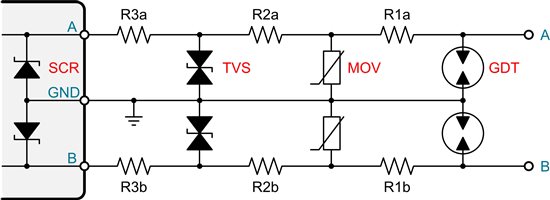Hi,
Application note SLYT484 suggests on page 6 a TVS application circuit for overvoltage protection. Series resistors R1 and R2 are between the junction TVS - line and the transceiver. Is it correct? I would expect to have the resistors between the line and junction TVS - transceiver so that they would limit overcurrent to both the TVS and transceiver. Overvoltage is limited by the TVS anyway.
Could you please let me know why you connect it in this way and if there are any benefits of such wiring.
We would prefer to connect R1 and R2 as we described. Is it possible?
Thank you
Daniel


